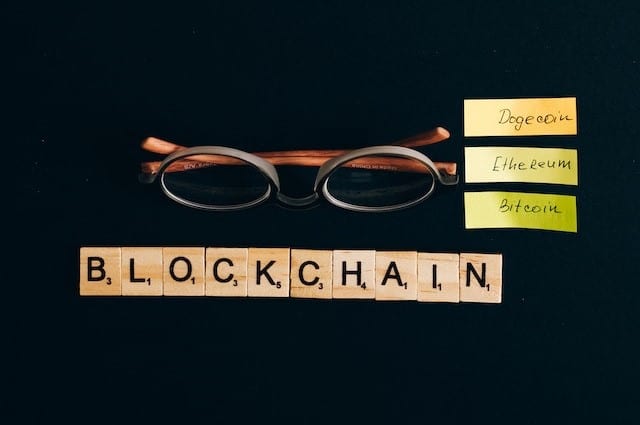As technology advances at an unprecedented pace, the integration of blockchain and real-world data has emerged as a revolutionary breakthrough. The seamless merging of these two seemingly distinct realms has opened up new avenues for innovation, transparency, and security across various industries. In this article, we delve into the concept of linking real-world data with blockchain technology and explore its myriad applications, benefits, and potential challenges. Gain a competitive edge in both stock and crypto trading with Altrix Sync – optimize your profits with this game-changing platform.
Understanding the Fusion: Real-World Data and Blockchain
● Defining Real-World Data Integration
Real-world data pertains to information obtained from sources outside the digital realm, capturing real-life events, incidents, and verifiable facts. This type of data spans various domains, including financial transactions, supply chain operations, healthcare documentation, and beyond. The primary difficulty lies in the dependable and precise integration of this data into the blockchain, which serves as a decentralized and unchangeable digital ledger.
● The Backbone of Blockchain Technology
In contrast, blockchain stands as a decentralized and tamper-proof digital ledger innovation that guarantees transparency, security, and reliability in various transactions. Every individual block within the interconnected chain holds a comprehensive log of transactions. Once incorporated, the information becomes exceedingly challenging to modify, thereby establishing an immutable timeline of occurrences.
Applications of Real-World Data Integration in Blockchain
● Supply Chain Management
Blockchain’s integration with real-world data has transformed supply chain management. Every step of a product’s journey can be recorded on the blockchain, allowing stakeholders to trace its origin, manufacturing, shipping, and more. This enhanced transparency reduces fraud, counterfeiting, and inefficiencies.
● Healthcare and Medical Records
Integrating medical records onto a blockchain ensures the security and accessibility of patient information. Medical professionals can access accurate patient histories while ensuring data privacy and security compliance.
● Financial Transactions
The incorporation of real-world data into blockchain technology has significantly impacted the financial sector. This innovation has brought about accelerated, secure, and easily traceable transactions. Activities such as cross-border payments, remittances, and the creation of digital assets have all experienced enhanced efficiency and reliability as a result of these advancements.
● Smart Contracts
Smart contracts represent self-executing agreements where predetermined rules are encoded directly into code. These specialized contracts can autonomously initiate actions upon the occurrence of specific external events. This innovative feature removes the necessity of intermediaries and significantly diminishes the likelihood of conflicts or disagreements.
Benefits of Linking Real-World Data and Blockchain
● Enhanced Transparency
The transparency offered by blockchain ensures that all stakeholders have access to the same set of data, reducing information asymmetry and building trust among parties.
● Improved Security
Blockchain’s cryptographic nature and consensus mechanisms make data tampering extremely difficult. This security feature is especially valuable when dealing with sensitive information.
● Efficient Data Management
Integrating real-world data into the blockchain streamlines data management processes by reducing manual intervention, errors, and duplications.
● Decentralization and Autonomy
The decentralized nature of blockchain reduces the reliance on central authorities, giving individuals more control over their data and transactions.
Challenges and Considerations
While the integration of real-world data and blockchain presents remarkable advantages, there are challenges to address:
● Data Accuracy and Reliability
Ensuring the precision and dependability of real-world data before its inscription on the blockchain holds paramount importance. Inaccurate data has the potential to give rise to erroneous conclusions and decisions, underscoring the significance of meticulous data validation.
● Scalability
Amidst the escalating number of transactions and the rapid accumulation of data within the blockchain network, the critical issue of upholding scalability comes to the forefront. Ensuring the system’s scalability is of utmost significance as it strives to accommodate this mounting load while maintaining its operational efficiency and speed.
● Privacy Concerns
While blockchain provides data security, the transparent nature of the technology raises privacy concerns, especially when dealing with sensitive personal or corporate information.
Conclusion
The convergence of real-world data and blockchain technology has inaugurated a transformative phase brimming with opportunities across various sectors. This amalgamation, spanning domains such as supply chain management, healthcare, and finance, presents a heightened level of transparency, security, and operational efficacy. Yet, it remains imperative to adeptly address the obstacles linked to precise data, scalability, and confidentiality. As enterprises and entities persist in their expedition to harness this technology’s potential, the harmonious assimilation of tangible data into the realm of blockchain holds the potential to realize a future that is both more interconnected and fortified.


